2025 Author: Isabella Gilson | [email protected]. Last modified: 2025-01-23 12:50:30
Mango is the fruit of the tropical mangifera plant. For hot countries, this is a common fruit that is eaten every day, like apples. And for the cold regions of the globe, this exotic fruit is a rarity. What is mango? What is it like inside and how to store a mango at home?
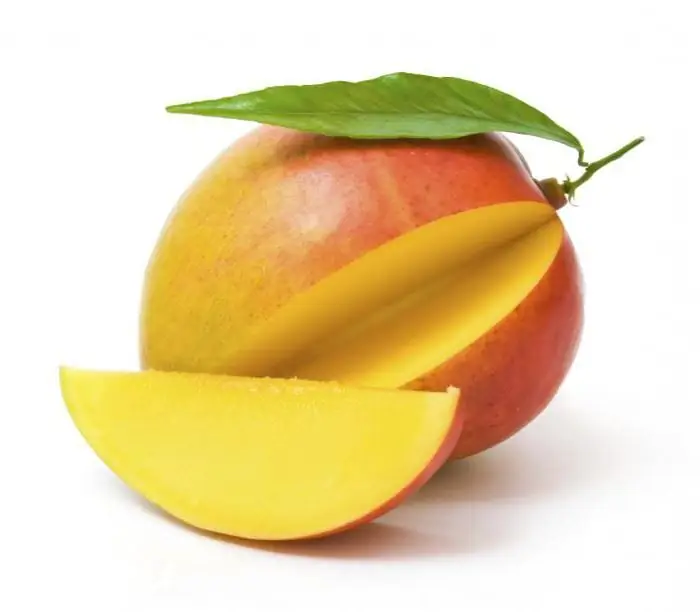
General information
What are mangoes? Like fruit trees in central Russia, the mango plant is divided into species.
Common name - mango tree or Indian Mangifera. This tree is native to India and Pakistan. However, it is cultivated in all hot subtropical and tropical countries. It refers to evergreen plant species.
The following varieties exist:
- curry - small non-varietal fruits, greenish peel, hard orange flesh;
- chok anan - fruits of light yellow color inside and out, weight and shape fit easily in the hand;
- kae savoy - large mangoes, they are eatenin a greenish form.
These are not all varieties of fruit tree, there are at least 9-10 of them. But that's not the point now.
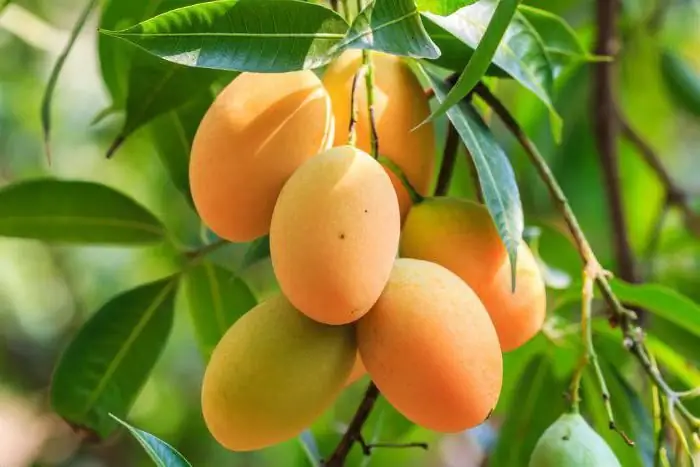
Signs of a ripe mango
So how do you know if you're buying a ripe mango at the store? Key Features:
- there are no signs of damage and decay on the surface, the peel is not pressed into the pulp;
- no brown or gray spots on skin;
- on the cut, the flesh is bright orange, not gray or brown;
- color of the skin - red, yellow and green - corresponds to the color of the flesh;
- pulp with a sweet taste and fibrous structure.
Store in the refrigerator or freezer
So, what is the best way to store mangoes at home? If you decide to use a refrigerator for this purpose, then there are some subtleties. Never put unripe, slightly greenish fruits in cool or cold places. They will begin to give off moisture and gradually rot, instead of ripening to a soft, juicy fruit.
But overripe fruits are placed in the refrigerator to keep them longer in this state. At the same time, do not put them on the upper shelves, where the relative temperature is lower. The best shelves for fruit are lower drawers. You can put paper substrates in them to even out the humidity of the air. If the humidity is high, fruits will rot even in the refrigerator.
Freezing mangifera fruits is not recommended, but such storage also takes place. Contrary to popular belief, the flesh does not become sticky orslippery. The taste and texture of the fruit almost do not change, only part of the nutrients and vitamins are lost.
To properly freeze the fruit, follow the step-by-step instructions:
- wash and dry it;
- cut and remove pit;
- peel off the skin;
- cut or chop flesh, place in freezer containers;
- stash for cold storage.
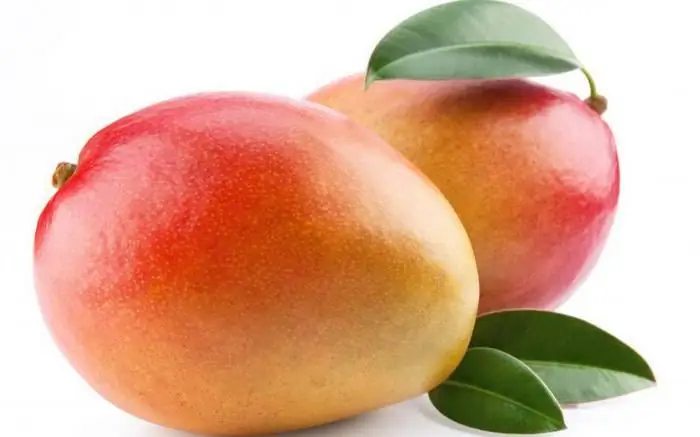
Storage at room temperature
How to store ripe mango at home? At room temperature, the fruits are stored for ripening and ripening. Within 6-7 days, slightly hard fruits become softer.
In the homeland of the growth of mango fruits, they learned how to preserve them in an original and quite affordable way. They are soaked in s alted water for several hours. Then wipe and store in the usual way. The fruits from this last longer and better in a ripe state, and the flesh becomes crispy when cracked.
But if you leave the fruit in direct sunlight, it will slowly begin to dry out - the skin will be rough and wrinkled, and the flesh will be hard.
Storage temperature
The optimum storage temperature for ripe mangoes is +10, and for unripe - +13. The recommended storage period is one month.
Note to the hostess
To keep your mango fresh and smooth a little longer, cover it with a thin layer of vegetable oil or any other vegetable oil. The fact is that moisture will stop coming out of the pulp throughskin - the oil layer will actively prevent this. But this measure is used for no more than two days.
After 2-3 days after purchasing a mango in a store, it is recommended to eat it. Rinse thoroughly in warm water beforehand.
How to store mango cut at home? Of course, it is better to eat the peeled and cut into pieces fruit immediately or use it when preparing culinary masterpieces in the kitchen.
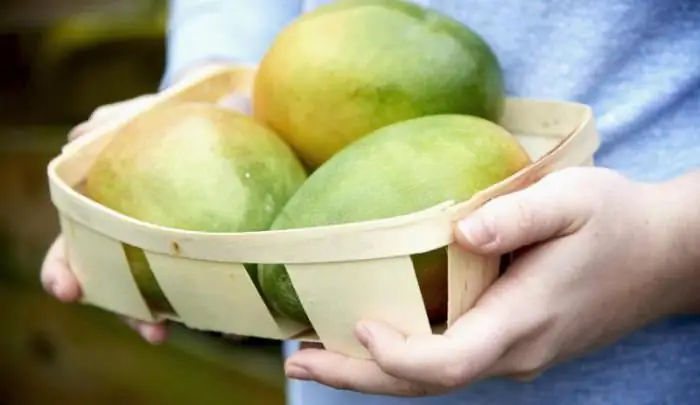
What to cook with mango?
Dishes that can be prepared from the mangifera fruit:
- jam or jam with sugar or honey;
- syrups, compotes or jelly;
- jelly or mousse;
- popsicles (cream or popsicles);
- sorbets;
- creams for layering desserts and cakes;
- shakes, juices, smoothies (single ingredient or with other ingredients);
- soups, including mashed potatoes;
- sweet or snack fruit salads;
- topping for cheesecakes, tiramisu or casseroles;
- petit fours, cakes;
- marinades for meat, chicken or fish;
- fritters, pancakes or pancakes (where mango is part of the dough or filling for stuffing pancakes).
Now you know how to choose this exotic fruit, how to properly store mango at home and what you can cook from it for dessert and more!
Recommended:
How to store coffee beans at home: useful tips
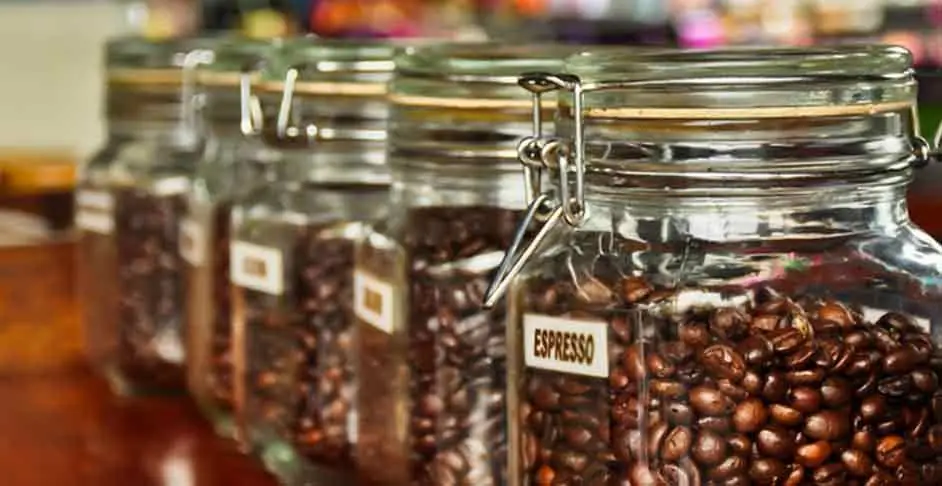
This article will give practical advice on how to properly store coffee beans at home. Options for bean storage containers will be given, as well as suitable locations. In addition, the consequences of improper storage are also mentioned
How to prepare pickled cucumbers, like in a store: recipes and tips
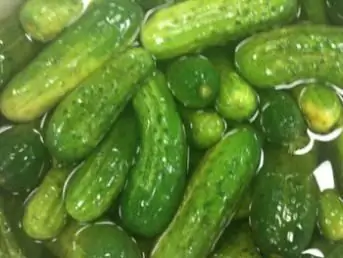
Every housewife has her own time-tested ways of home-preserved vegetables. But sometimes you want to put into practice other, new recipes. For example, how to close pickled cucumbers at home, as in a store? Let's look at some of these useful recipes. Also in this article are tips and tricks for getting this amazingly tasty and appetizing snack
Where and how to store dried fruits at home

From the article you will learn how to store dried fruits at home in order to preserve their freshness and taste as long as possible
How much and how to store smoked fish at home?
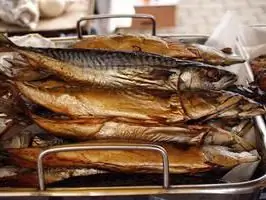
How to store smoked fish? How long can you keep smoked fish in the refrigerator? What are the recommendations for increasing the shelf life of these products?
How to store bee bread at home? Temperature and storage time
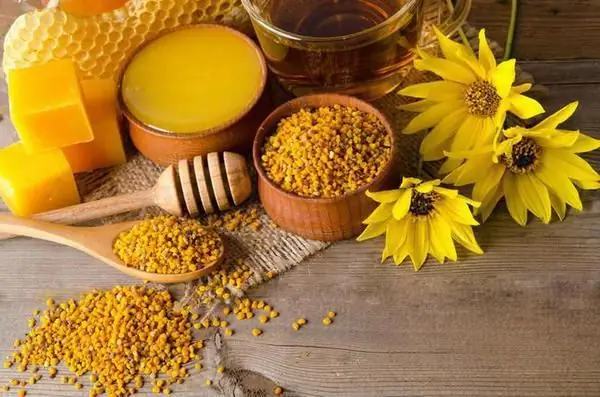
How to store bee bread at home? Such a question is quite complicated, since bee pollen can deteriorate very, very quickly. It is the intricacies of storage that this review will be devoted to

